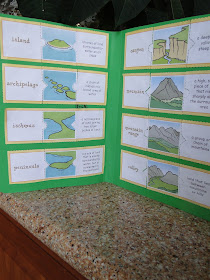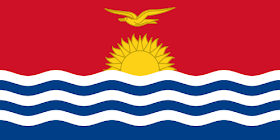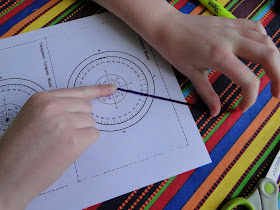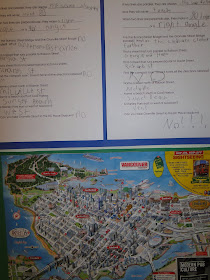
Our trip to B.C. was a perfect opportunity to study some map skills and basic geography. While we were traveling, we looked at street maps and used our GPS. Back home, we delved into a more thorough geography unit. So here is what we've been up to this week...
Traveling to the west coast of Canada put us in a different time zone, so we started by pulling out our globe and discussing time zones. The neat little spinny thingy on the globe was fun to use, and we also watched a BrainPop video and looked at several time zone maps online. Enchanted Learning also has a good explanation of time zones. We have friends in Germany, so we talked about what time it would be for them while we're getting ready for school, or eating dinner, etc. We shone a flashlight on the globe to represent the sun at noon on different parts of the earth. The kids really enjoyed putting their hands in front of the light and saying, "Bwah-ha-ha! I'm blocking out the sun!" Should I be worried?
Then the conversation turned to flat maps versus globes, and we discussed why Greenland looks so "stretched" and Antarctica looks like a long strip of land on a flat map. This illustrative activity comes from Mapping the World by Heart. The kids drew a picture on an orange. We discovered that even Sharpies wouldn't write very well on the orange peel, but the kids did their best. Dude drew a star and a design.

Super drew a long fire-breathing dragon.

Then I scored the peel and carefully removed the pieces.
As you can see, it's impossible to take a round picture and turn it into a flat, rectangular map without stretching or distorting the picture.

We used some activities from Evan Moor's Take it to Your Seat Geography Centers, including this basic continents puzzle. (You might notice that South America is missing. I think a dog may have chewed up that particular continent.) My kids are very familiar with the continents and oceans, but they still got a kick out of putting it together. Before gluing it in place, they scooted the continents around to form Pangea. Of course it was necessary to use lots of sound effects while demonstrating continental drift.

Then we used another TTYS activity to make a very simple landforms lapbook. (There is a similar activity for bodies of water.) First the kids matched up the word, picture, and definition.

They already knew most of these, but there were a handful of unfamiliar terms. Thanks to the puzzle format, they were able to figure them all out. We all had fun trying to pronounce "isthmus" and we all agreed that there is something about the word "archipelago" that makes you want to look down your nose while holding an imaginary cup of tea. Then we looked at the globe and tried to find examples of each landform.


In addition to TTYS, I pulled ideas from Intellego Maps K-2. A couple of the links weren't working, but it's really my fault because I bought the thing over a year ago and never used it, so there have probably been some updates since then. We just skipped those links. I've never had that experience with Intellego before, and I've used several of their programs as a "springboard" for our unit studies.
The truth is, I never use Intellego (or anything else) exactly as it's designed. I'm too independent/rebellious/snotty to use curriculum as is. For one thing, I never EVER have my kids fill out a KWL chart. I just dislike them for some reason. (Maybe I'm too afraid of what would happen if I gave my kids a piece of paper and instructed them to write down what they WANT to know about geography!)
Instead, I like to spark my kids' curiosity with a juicy bit of information or a thought-provoking question. For example: "What's special about Kiribati?"

We'll we writing more about Kiribati later, but if you want to know the answer, it's at the bottom of this post.
Intellego suggested making a compass rose out of clay (we actually used Model Magic.) For inspiration, we looked up several images online. They can be quite beautiful, and we were surpirsed by the variety. It's not easy to add a lot of detail with Model Magic, but it was a good way to review the cardinal, intercardinal/ordinal directions. (Does no one say "subcardinal" anymore? That's what I was taught, back in the previous millenium.)

We wondered why they're called "compass roses." Well, it turns out, it's just because they look like a flower!

Then it was time to "get our bearings," so to speak. I used several pages from Teacher Filebox for information and inspiration, but we didn't actually do the worksheets. Instead, we used string to practice finding bearings in degrees.

Then we cut out the little compasses and pinned them to our giant map. The kids took turns choosing "destinations." Then we pushed a pin into the new destination, stretched some yarn to the pin, and found the bearings. This is our "voyage" around the world so far...

Then we cut out the little compasses and pinned them to our giant map. The kids took turns choosing "destinations." Then we pushed a pin into the new destination, stretched some yarn to the pin, and found the bearings. This is our "voyage" around the world so far...

Not exactly the most efficient route, but it did take us to some interesting places! To practice some more practical map skills, I made up an activity based on our souvenir map of Vancouver.

I asked questions like, "Find a street that runs parallel to Burrard Street," and "Is Stanley Park east or west of Gastown?" The kids had fun looking at the map and remembering places we visited.
So, our geography unit is off to a good start. We'll keep working on the TTYS and Intellego projects and pulling stuff from Teacher's Filebox. I'll probably save Mapping the World by Heart for next year. If you're wondering what's so special about Kiribati...it's the only country that is located in all four hemispheres! Cool, huh?
So, that's some of what we've been doing this week. Now I'm off to the blogosphere to see what you've been doing!


Sparklee - Love this geography stuff! Would you please consider submitting this to the Hands On Homeschool Carnival? It's terrific!
ReplyDeletehttp://blogcarnival.com/bc/cprof_6064.html
Wow, thanks! I'd love to!
ReplyDeleteYou have the best creative ideas. I love the orange peel idea to explain how flat maps are spread out. Going have to steal this idea;)
ReplyDeleteIsn't that cool? I ordered Mapping the World by Heart a while back and decided to set it aside because I didn't think the kids were quite ready for it. But I'll probably pull a few more ideas from it this year--the way it's organized, you don't have to work strait through.
ReplyDeleteI am never sure if I like coming to your blog or not... on one hand I LOVE all the awesome things you do... on the other hand I feel completely "unfun" !! LOL Love these projects~ especially the orange!
ReplyDeleteLove how the dog possibly ate South America too! he he
One of our dogs LOVES to chew paper--???? (And Legos, and pencils, and everything else!)
ReplyDeleteFantastic geography lessons, Sparklee!
ReplyDelete